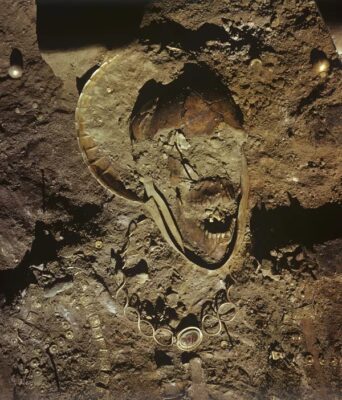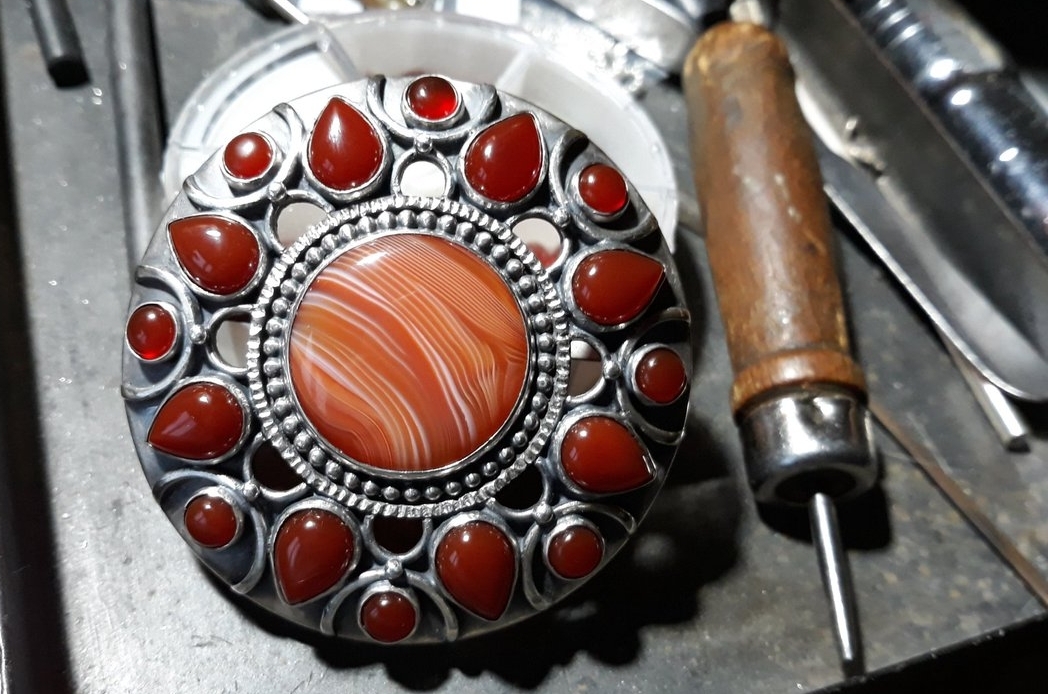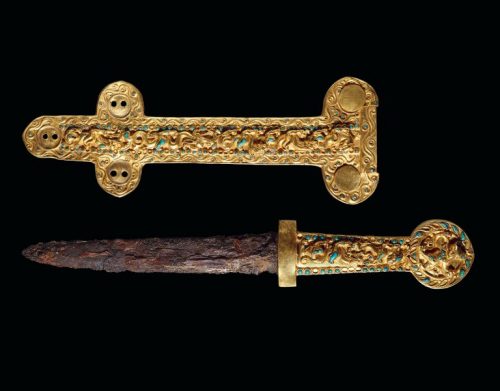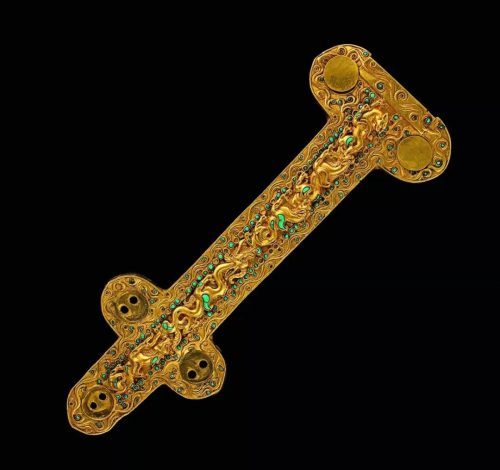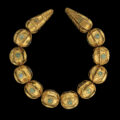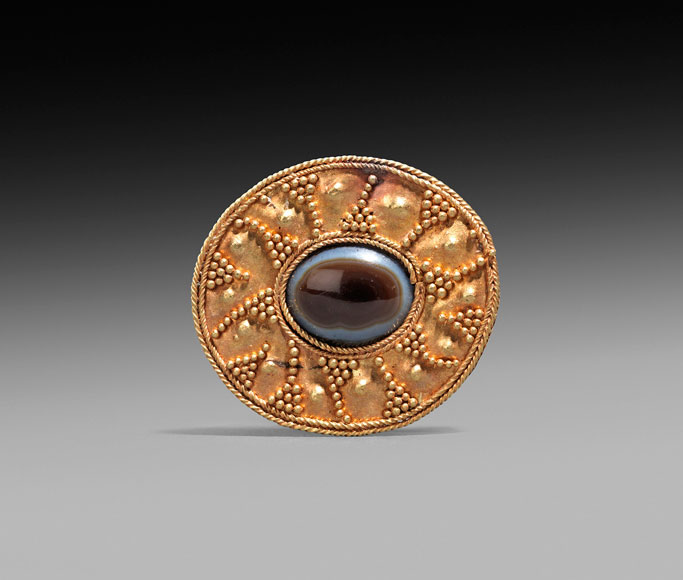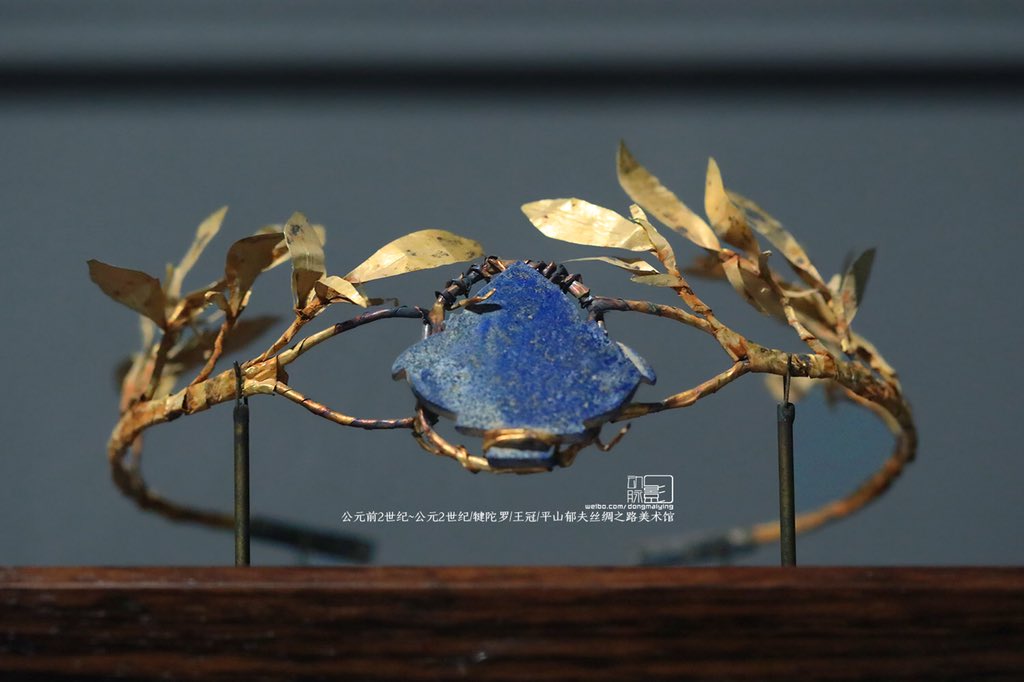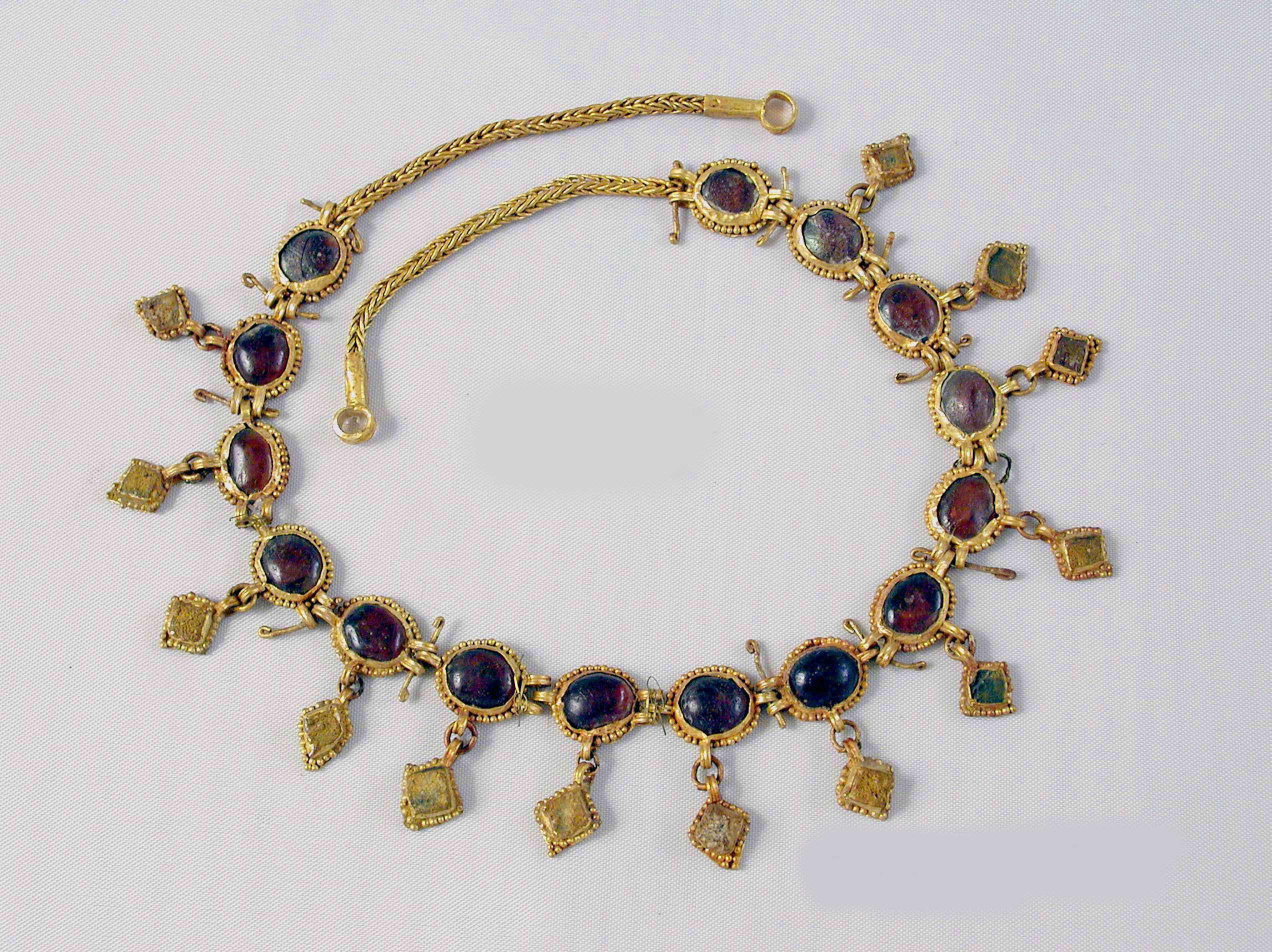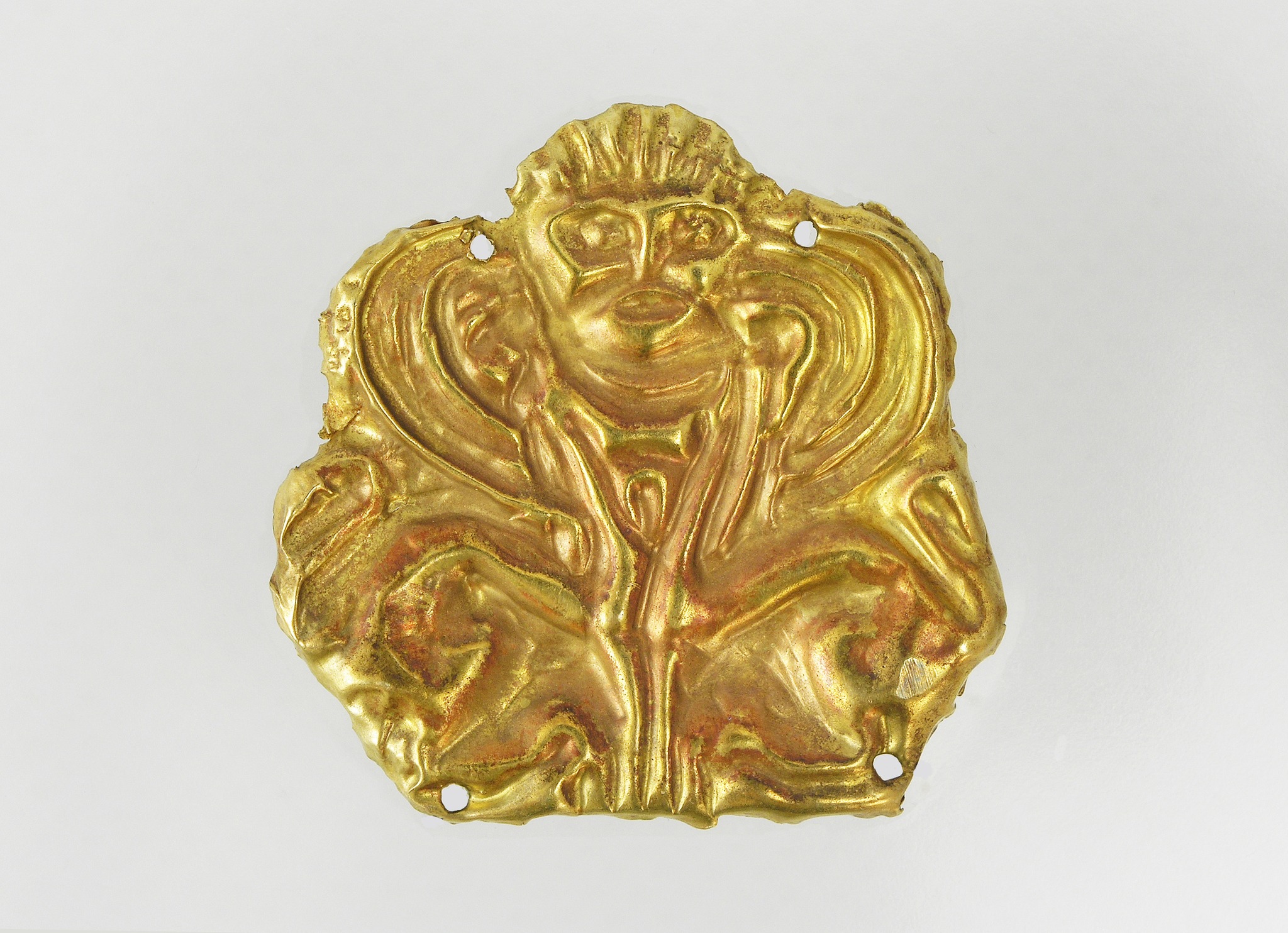Tillya Tepe is an archaeological site in northern Afghanistan near Sheberghan, in the ancient region of Bactria. It was surveyed in 1979 by a Soviet-Afghan mission of archaeologists led by Victor Sarianidi. They found a total of around 20,000 gold ornaments in six graves thought to date to around the 1st century BCE – 1st century CE.
Lit. : В.И. Сарианиди, Храм и некрополь Тиллятепе. [V.I. Sarianidi, Temple and necropolis of Tillya Tepe] // 1989. 240 p. ISBN 5-02-009438-2
In the grave of the supposed chieftain, the only male found at the site (Tomb 4), a man aged between 20 and 30, approximately 170 and 185 cm tall was buried with the gold daggers and scabbards decorated with turquoise, as well as a woven gold belt with medallions depicting the Greek god Dionysus riding a panther. Near the chieftain’s chest, archaeologists found an Indian medallion depicting the Buddha – one of the oldest in history, according to the researchers. The head of the deceased rested on the bottom of a gold phial with a Greek inscription, under which was a silk pillow [photo in situ below]. Attached to the rim of the phial were a gold model of a tree, apparently a figurine of argali, and a gold tube. Hanging over the forehead of the deceased, these objects together may have been part of a diadem.
A long sword and a dagger in a gold sheath were placed at the left side of a man. A second dagger, also in a gold sheath, was located at his right side. A horse bridle, decorated with gold phalerae and presumably arched plaques with relief images executed in the Siberian animal style, was apparently placed at the feet. Thousands of sewn-on plaques from burial garments, an Indian gold coin, and a glass intaglio depicting three warriors complete the deceased’s burial offerings. An iron folding chair was placed at the head of the coffin. Also found here were two bows and two quivers with gold bindings, filled with iron arrowheads. One of the quivers had a silver glass-shaped lid with fine engravings on the body.
Akinak sword / dagger, typical for the nomadic tribes of Sakas, and its cover. Decorated in the Siberian / Scythian animal style. Tomb 4, 1st/2nd century
Cover – Wood, leather, gold, turquoise, dimensions: 23.5 × 9 cm.
Dagger – a pommel is decorated with scenes of animal combat and an image of a bear. Iron, gold, and turquoise, 37.5 cm.

